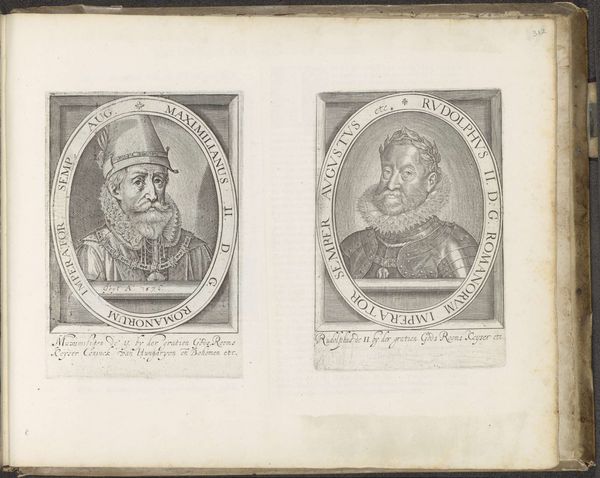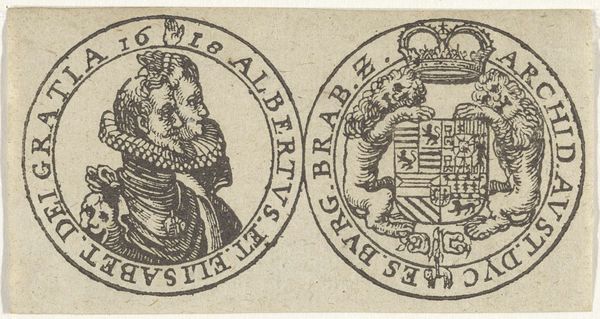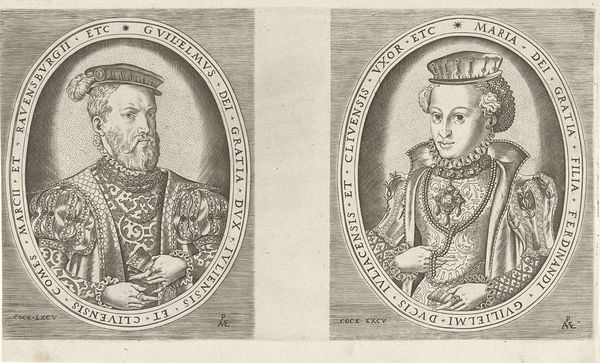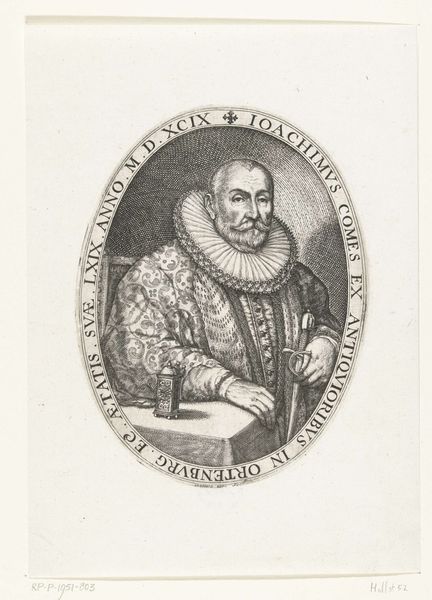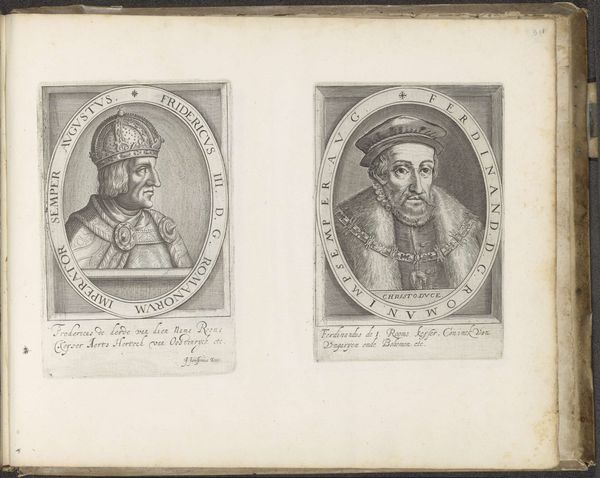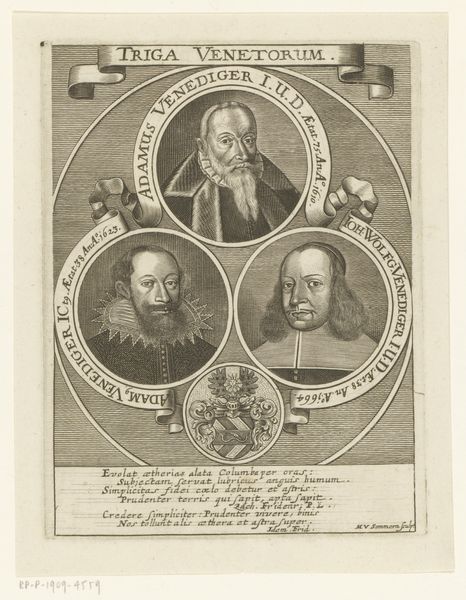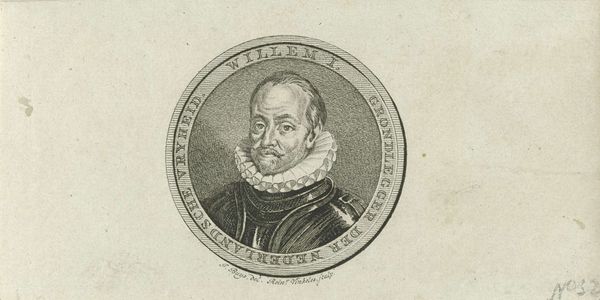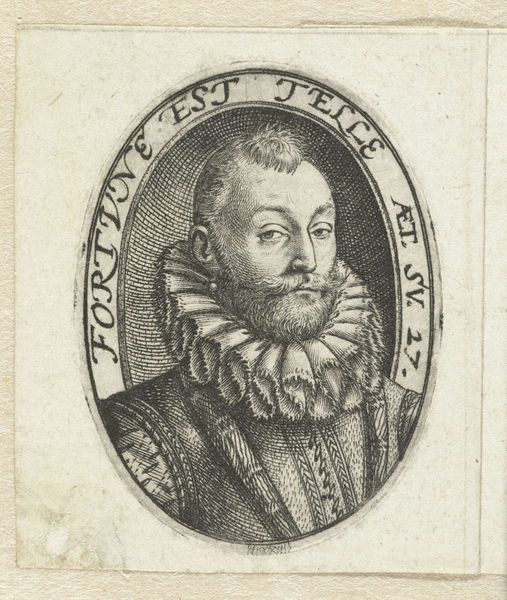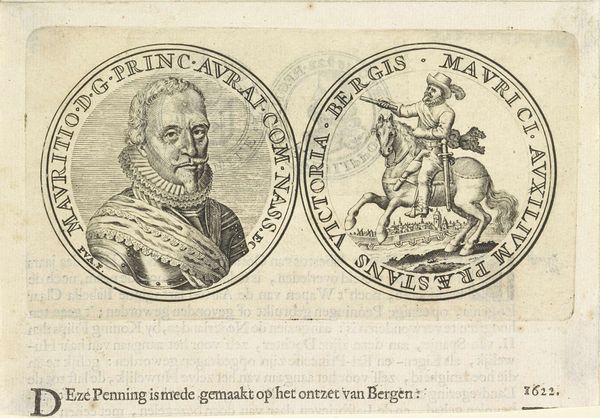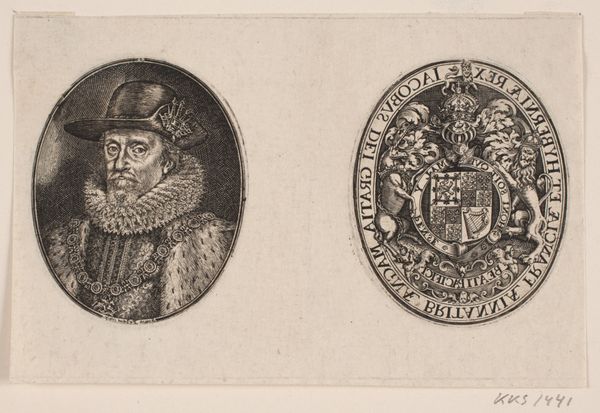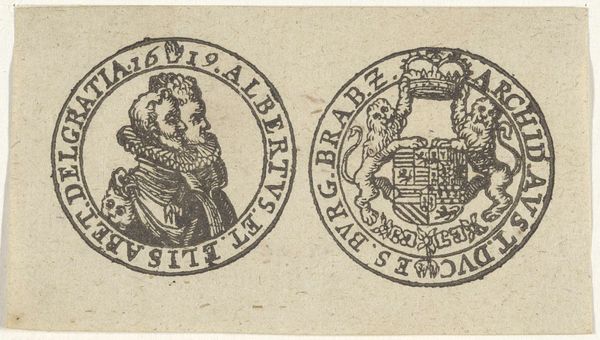
Afdrukken van de twee zijden van het portretmedaillon van Arnoud van Beresteyn 1579
0:00
0:00
drawing, print, ink, engraving
#
portrait
#
drawing
# print
#
11_renaissance
#
ink
#
northern-renaissance
#
engraving
Dimensions: height 45 mm, width 34 mm, height 45 mm, width 34 mm
Copyright: Rijks Museum: Open Domain
Curator: Looking at this fascinating engraving from 1579, created by Hendrick Goltzius, entitled "Afdrukken van de twee zijden van het portretmedaillon van Arnoud van Beresteyn," I'm immediately struck by the way portraiture conventions are being playfully subverted. It seems less about idealized representation and more about conveying something…trickier. Editor: Trickier, yes. It has a melancholic feel for me, something about the intense gaze paired with the frailty represented by the wolf makes me feel somewhat…uneasy. And two medallions, side-by-side, a visual paradox – are we meant to see two sides of the same coin, or perhaps two aspects of Beresteyn’s persona? Curator: Well, remember, Arnoud van Beresteyn was a key political figure during a tumultuous time in the Netherlands, and these medallions were used to create alliances between families. I imagine a likeness with a touch of fashionable sadness actually worked well as the calling card of the era, maybe he even seemed intellectual! Editor: Perhaps, although the visual motifs really intrigue me. Why depict him with a wolf sitting mournfully upon, what seems like, ruins? What could that indicate about his personal ideology? I suppose Arnoud wanted to represent himself as thoughtful, cunning but the symbols add deeper connotations. It makes us look deeper at the man within the public persona. Curator: This image allows us to see this piece as more than simply the portrait of a member of nobility from the era. There is evidence that printmakers like Goltzius sometimes took the political views of those employing them. If this is one of those times, he may have wanted to subtly undermine Arnoud within his work. Editor: Right, these visual messages allow for public reflection on cultural ideals. While the average person may never be in Arnoud's circles, a circulating image can invite them to be reflective. Even after all these years. Curator: It's always rewarding to look beyond the surface, seeing the artwork's social echoes. Thank you! Editor: And for seeing its visual language, reminding us of history's enduring symbols.
Comments
No comments
Be the first to comment and join the conversation on the ultimate creative platform.
